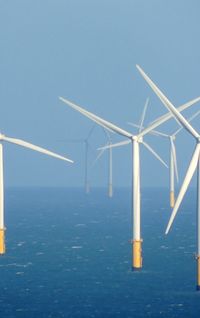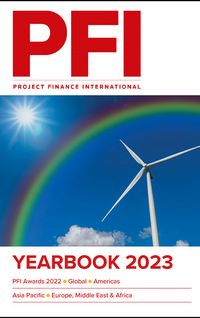LNG leaders met in Athens at the start of December at the World LNG conference to discuss the state of the industry. The event had a different outlook from 12 months ago. By David Ledesma of South-Court Ltd and distinguished research fellow, Oxford Institute for Energy Studies.
The World LNG conference was held on November 29 to December 2 2022 in Athens. This conference had a different outlook to last year's, my previous report was titled "LNG must start to measure and reduce emissions – there is no place to hide", in that the World’s emergence from Covid, and European gas supply distribution and global gas/LNG rebalancing, has led to a level of optimism that gas/LNG is now wanted and is being seen as part of the energy transition, rather than competing against it.
The signing of three major long-term contracts within a week of the conference – China’s purchase of 4mtpa for 27 years from Qatar Energy; Sempra selling 2mtpa to Conoco Phillips for 15 years for supply to Germany; and Ineos’s 1.4 mtpa purchase, also from Sempra/Port Arthur, for 20 years – encouraged optimism that Europe is willing to sign long-term contracts.
Politicisation of energy
Right from the start of the conference, opened by Kyriakos Mitsotakis, Prime Minister of the Hellenic Republic of Greece, it was clear that energy was seen as a political tool by Russia with clear retorts – "Russian blackmail will not break our resolve" and "We will not be blackmailed by Russia on LNG supply". One speaker noted that "Russia has redrawn the energy map of Europe", but said the reality is that it has redrawn the energy map of the world – "Russia/Ukraine has impacted hugely on global gas". The geopolitics of energy has changed – energy is being used for geopolitics and Russia is no longer a reliable energy supplier.
Last year, the role of gas in energy transition was unclear; this year, clearly gas/LNG is seen as a fundamental part of energy transition as well as global energy security. Speakers, though, were realistic; arguing that gas is going to be with us for a while, but it must be available at a reasonable cost and new projects need to be developed in parallel with renewables. The pull of increased demand for LNG has had a major impact on LNG availability to the rest of the world, but many speakers noted that Europe has been lucky over the past few months of the crisis because of reduced demand from China, and other South Asian countries giving up buying LNG due to price, has been key in balancing the market – making LNG volumes available.
With Europe moving from a market of last resort to a market of most need, there was a lot of discussion on the validity of Europe’s gas pricing indices. The crisis has clearly revealed a problem, and the conclusion of most speakers was that TTF is no longer a valid marker for the LNG industry in Europe, it ‘no longer represents LNG pricing’ and the industry must find a way to move away from TTF to an LNG index that reflects the value of the LNG market in Europe.
The crisis has also impacted on the liquidity of other hedging indices with the trading of JKM swaps down by 40% in 2022 vs. 2021. One speaker noted that risk management is required to manage risks in LNG and gas trading and, with huge market uncertainties, hedging risk and liquidity constraints makes LNG trading even more risky. Speakers noted that there are more pricing challenges than when we met last year, with price volatility and the cost of hedging (including the threat and cost of large margin calls).
Affordability
With rising gas and energy prices there was considerable discussion about the affordability of gas and LNG, especially in less mature economies where domestic gas prices are lower. The price of LNG is too high, compared with what new markets are be able to pay, with speakers being clear at the South-Court Conference Briefing: World LNG Conference, December 2022 it is difficult to displace oil and coal at current LNG price levels. Countries, such as India and Pakistan, need price levels that are economic in their markets, suggesting a maximum LNG price of US$10/MMBtu.
It was noted that LNG has been replacing liquid fuels as part of decarbonisation initiatives, but the decoupling of LNG and oil prices has meant that LNG/gas consumers are now reverting back to oil. In Pakistan, it was argued, the past two years have pushed back the development of LNG regasification terminals by two to three years and high LNG prices have put back LNG/oil replacement by eight to 10 years. Pakistan currently imports about 9mtpa of LNG, mostly through term contracts – only ~1.5m tonnes spot – and the Pakistani gas market had the potential to grow to 20mtpa, but not at current price levels and oil/LNG price differentials. One speaker noted that high prices delayed electrification in some countries, and this leads to a delay in
lifestyle growth that people expect, leading to a wider social impact.
In a salutary comment, one speaker said that 54% of Africa’s energy supply is still from biomass, compared with 11% globally, and that 600m Africans do not have reliable energy. Lower prices are needed to correct this. Population growth will change the way the world looks by 2050 – at that time India will have the world’s largest population with China number two and Nigeria three. The location of energy demand will therefore shift. Today, these countries are going back to using coal and wood due to high gas and oil prices and it is the countries that are most impoverished that are growing the fastest and need to decarbonise. In Nigeria, each year 100,000 people die of inhalation of fumes from burning firewood and in Africa 60% have no electricity – this is where clean energy demand growth is required.1
LNG availability
The Ukraine crisis has made LNG and gas spot markets precarious and uncertain, taking a massive amount of LNG out of the global traded market. Politicians and the gas/LNG industry are assuming that Europe will be able to rebalance but, to secure new LNG supply, project developers need long-term contracts to guarantee demand and revenues. One speaker noted that 60% of new projects are selling to intermediaries that are taking the role of buying long-term and selling medium/short-term volumes; end-users cannot commit to long-term 15 to 20-year contracts. But still, in Europe, there is a perception that LNG prices are high and there is a fear that LNG is not a reliable source of supply as cargoes can be diverted to other parts of the world at short notice. Presenters tended to focus on a figure of 100mtpa–150mtpa additional LNG capacity being required to reach FID over the next two to three years.
That said, sellers were of the view that buyers need to commit long-term, but buyers want contracts to give flexibility to enable cargoes to be diverted as markets change, required because carbon neutrality in some countries is so uncertain. Investment in new downstream regasification infrastructure is also required, with some noting that "we have been lucky over the past few months of the crisis as the historical overhang of the LNG FSRU market meant that there was spare capacity that could be quickly put into the market to expand LNG terminal capacity in Europe".
Speakers were of the view that the future of LNG hinges on the investment challenge and that government support is critical. Europe will see 14 new FIDs on FSRUs and Germany alone needs 18mtpa of LNG import capacity. One speaker, when talking about the need for new LNG capacity in Asia, noted that to reach FID an anchor customer is required, then building the terminal fast and at low cost is key, saying "build lean and then scale up – do not build spare capacity early for energy security reasons or the project will be uneconomic".
LNG cargo carbon neutrality?
Carbon neutral LNG was hardly discussed at the conference, but in one specific panel the need for independent measurement and verification of emissions along the LNG chain was stressed. This measurement and emissions data are needed and will lead to industry transparency. That said, it
was viewed that buyers are not willing to pay a premium for greener cargoes, even though the cost of measurement is small.
The definite view was that the focus on security of energy supply following Russia’s invasion of Ukraine has put back countries’ carbon neutrality targets (some said by 10 years). That said, in developing new liquefaction capacity, the need to achieve net-zero in consuming countries adds another uncertainty. Even though 25% emissions occur in the LNG supply chain from extraction to regasification – 12% extraction, 9% liquefaction 3% shipping, <1% regasification – 75% of emissions are in the end-user markets (Scope 3 emissions).
Speakers were clear that new supply projects need the right market signals to support investment, and this leads to a clear need to measure emissions effectively. GIIGNL, which won the conference Energy Transition award, set out the emissions measurement process and one presenter made it clear that emissions can be measured effectively from satellites (satellites can reveal the scope of GHG emissions with scans of 200km, and regions monitored can account for 80% all global oil and gas production).
The conference was clearly of the view that gas is the only commodity that can support the drive towards carbon neutrality, as the most clean and reliable energy source. Renewables will not happen overnight, but investors in gas and LNG projects need a roadmap to carbon measurement and neutrality, to support the business case for new projects. Projects need government support – as seen in Germany and recent announcements in Alaska.
Shipping
Being in Athens, the shipping session at the conference attracted some "heavyweight" speakers. The shipping panel overall was optimistic but there were worries over the long-term viability of LNG shipping. A key message was that ship construction costs are rising (~US$250m for a standard sized vessel) with a long four-year lead time to have a vessel constructed and in operation. Vessel owners must, however, be assured that vessels will be able to operate for their full lifecycle.
If changing regulations means that ships will be scrapped early, then owners will have to charge more for shipping capacity. The industry must therefore work on enhancing its profile to enable full lifecycle. Technology advancements have been made (for example getting boil-off down from 1.5% to 0.07%/day) but with steam and tri-fuel vessels needing to be replaced over the next decade, the investment environment for ships must remain good. If vessels must be phased out and replaced by 2040, how are new vessels going to be financed?
It was also noted that ships are not only there to transport LNG; over time a lot of the ships are acting as storage. Vessel speeds are falling (12–15 knots on average) even though charter rates are high, showing the "hidden demand" for ships as storage and a source of security of supply – energy security is therefore being priced into LNG storage/shipping.
Financing
The general view was that there is no lack of capital for good projects. That said, inflation and rising costs do mean that there is an increasing gap between debt and costs, which means more equity is likely to be required – "You cannot have a high-risk project at low cost" so risks have to be managed. Lenders were clear that long-term contracts are needed to reduce risks and to underpin projects revenues.
One thing lenders are concerned about is the potential for stranded assets ie, lending to a gas/LNG projects that has to become redundant due to the energy transition. The financing panel noted that banks have money for renewable projects but coal projects in Australia and Poland are not able to raise finance. Banks' compliance is, however, seeking ESG cover – license to operate – and projects must have a view on commitment to carbon neutrality, and some lenders to LNG projects are looking for linked CCUS and long-term CO2 storage.
New LNG applications
The growth of LNG in road transport and ships bunkers is being challenged by current oil/gas spreads. The Gate Terminal in Rotterdam noted that ship bunker LNG volumes were down 50% in 2022 vs. 2021, from 15 bunker vessels loadings/month to 7–8. Likewise, truck loadings fell from 930 to 600 trucks year-on-year. The panel was optimistic however on the growth potential of LNG, and bio-LNG, in ships and road transport as the only medium and long-term solution to minimise emissions. LNG in road transport is the only fuel that can enable you to meet 2030 regulations and bio-LNG enables you to meet 2050 regulations. In an interesting comment, it was noted that some European industrial customers on the gas grid are looking to install LNG tanks as a back-up to pipeline gas.
Here are three interesting quotes from the conference:
a) "LNG is not for the fainthearted"
b) "Europe’s crisis has spread globally"
c) "People have hit the snooze button. What is the wake-up call?"
Footnote
1 – It is interesting to note that one of the 2022 Earthshot prizes was awarded to Kenyan Mukuru Clean Stoves, which use processed biomass made from charcoal, wood and sugarcane. The stoves burn cleaner, creating 90% less pollution than an open fire and 70% less than a traditional cooking stove. They are cheaper too, costing just US$10 and halving ongoing fuel costs.
To see the digital version of this report, please click here
To purchase printed copies or a PDF of this report, please email leonie.welss@lseg.com

















